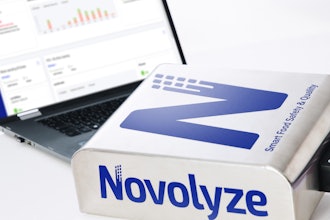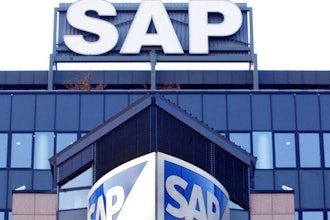
 Doug Sainato
Doug Sainato Computing plays a major role in what Railserve, Inc. does every day—keeping railcars safely moving within industrial, manufacturing, and production plants across the United States. It takes more than 1,000 workers at 70 locations to make this happen. To keep things efficiently operating on schedule, the Cloud plays a major role in operations. But it wasn’t always that way.
For organizations across the world, moving to the Cloud isn’t something that happens overnight. The company pursued a cloud journey to change the way it operates and functions.
None of these journeys are the same, but they do share common steps. These include understanding what the cloud is and what it can do for your organization, what to expect during migration—and how to manage day-to-day life in the cloud after the migration is complete.
What’s the Cloud, Anyway?
The Cloud, a solution comprised of software and services that run on the internet delivers a cost-effective, reliable backbone with secure, infrastructure services and flexible, scalable storage, without a pricey hardware refresh.
Instead, the network and data once stored on a hard drive or on-premise servers are now located in a remote, physical location. It’s accessible from any internet-connected device, allowing you and your team to share information and collaborate together online in real time.
It’s also highly secure. Virtual private clouds (VPC), next-generation firewalls, encryption—and advanced backup and disaster recovery services ensure that your critical data is safe, secure and quickly accessible in the event of a system failure.
Cloud computing also allows you to search giant repositories of information in or outside of your organization. As well, you can create customized, cloud-based maps and scheduling so your customers can find you—or so your people can locate their customers. That’s exactly what Beck Taxi in Toronto does to connect drivers with riders.
“We were getting too large to continue only with two-way radios, but didn’t want to introduce something that would alienate a driver who isn’t tech savvy,” explains Beck Taxi Operations Manager, Kristine Hubbard. “We wanted to keep our radios, but also have a way to better and more easily manage all of our drivers on the street.”
How Do We Know If It’s Time to Migrate?
If you’re looking for an always-on, accessible data network that delivers many other benefits, it’s time to consider the cloud.
Deciding if and when to launch a cloud journey depends on your organization’s needs. Before you make the move, here are a few steps to take:
- Conduct a bottom-up and top-down workload assessment. Bottom-up assessments may use automated environment discovery tools to identify server specifications and cloud fit. Top-down efforts validate application criticality, server dependencies and move groups. Move groups are applications that are dependent upon each other and must be migrated together.
- Establish the business case and total cost of ownership (TCO) for the Cloud. In this step, you’ll look at the benefits of migration, as well as the direct and indirect costs related to the migration and ongoing cloud usage. You’ll come up with a final figure that reflects the true purchase price of your cloud investment.
- Develop a migration plan and remediation strategy. During this phase, you will determine a strategy for each application, including Rehost (such as lift and shift), Refactor, Replatform, Replace (considering third-party COTS), Retire and Retain (leave in place),—all part of the 6 Strategies for Migrating Applications to the Cloud. It’s best to assess these initiatives early, and have a plan in place before you deploy.
For example, executives at Railserve knew they needed an expandable, secure infrastructure to resolve challenges from aging legacy hardware and software that lacked adequate memory.
Leadership researched solutions, weighed options and decided to pursue a cloud migration instead of refreshing or purchasing new licenses for the existing environment.
What Happens During a Migration?
For some companies, when moving to a cloud solution, migrating comes down to a simple “lift-and-shift” process. The cloud deployment team can move applications and all related data to the cloud without redesigning anything. The transition from on-premise servers to cloud infrastructure is virtually seamless.
Consider this example. Canadian online auctioneers Maxsold faced lagging hardware, security issues including malicious attacks—and the ability to scale its usage with its two auction sites. These sites were hosted by a private data center/network provider on physical hardware. Executives decided it was time to migrate to the cloud.
A lift-and-shift migration provided the infrastructure needed to halt malicious attacks, provide daily backups and create a system for reliable disaster recovery.
For others, it’s not so easy. When Railserve started to plan its migration, it appeared the deployment team could do a simple “lift-and-shift” migration. However, a pre-sale evaluation of the company's server environment revealed the job would be more complex.
All of Railserve’s virtual machines needed to be upgraded. To achieve this, the deployment team established site-to-site VPN connectivity between the company’s three corporate locations and the cloud migration project. They then implemented a new version of the old VMs within the new cloud infrastructure and extended capabilities to the cloud.
This took more steps than a simple lift-and-shift migration. The migration spread out over four, one-week engagements. Ultimately, the process, which also focused on secure, remote employee access and disaster recovery, was a success.
What’s Life Like in the Cloud Post-Migration?
After a migration, many companies opt to enroll in a managed services program with their deployment partners. Companies gain 24/7/3675 access to an experienced support team that will oversee and maintain their cloud IT infrastructure.
This allows them to free up in-house IT resources to focus on important tasks instead of taking time for reactive troubleshooting and extinguishing cloud infrastructure “fires.”
When you combine the cloud’s speed, efficiency, security and cost-effectiveness with a managed services program, you get a faster and smarter way to work across your organization. Whether you're looking to move to the cloud from on-premise infrastructure, or from one cloud environment to another, the journey is one for the better and not one to fear.
Doug Sainato is a sales manager of cloud solutions at Onix.






















